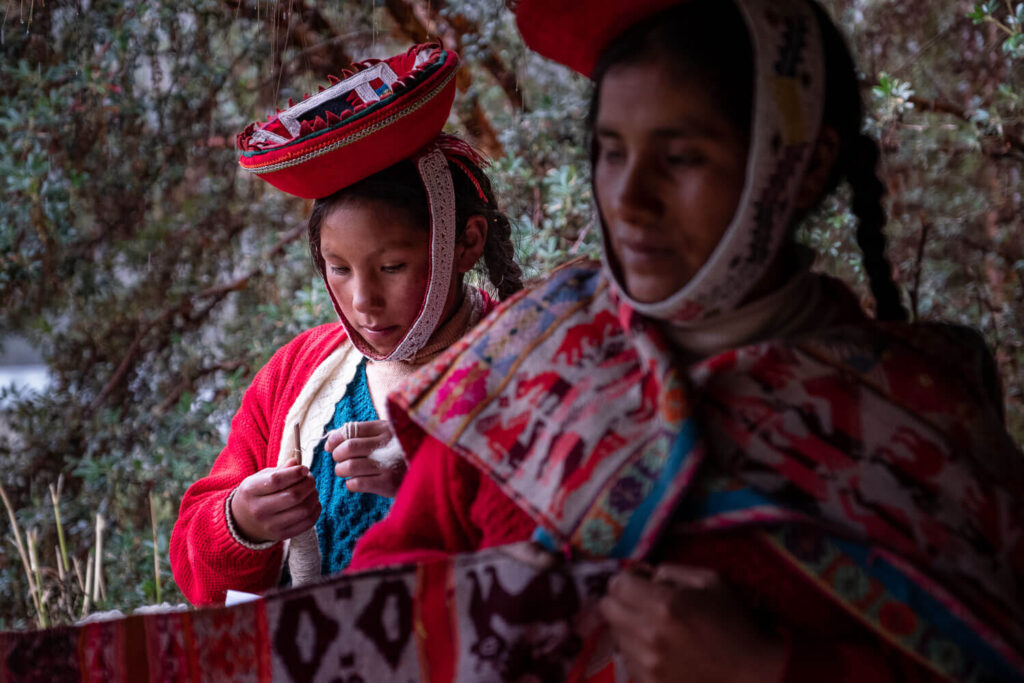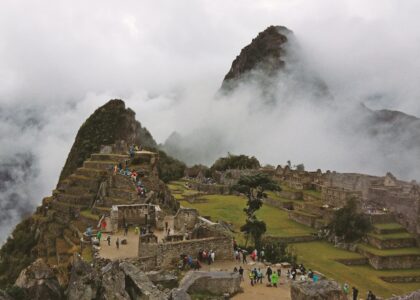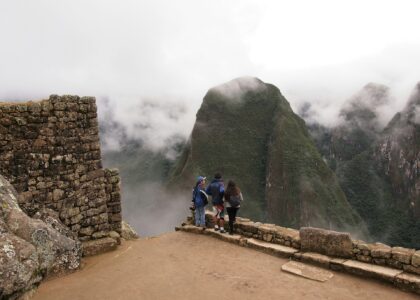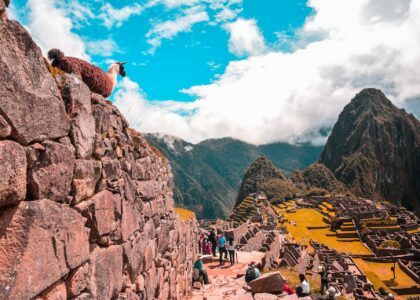In Peru’s Sacred Valley, weaving isn’t just a craft, it’s a living tradition, a form of storytelling, and a powerful expression of identity. These traditional textiles are as vibrant as the landscapes that inspire them, and the stories woven into each piece reflect generations of history, belief, and resilience.
From immersive village workshops to healing initiatives led by Indigenous women, exploring the weaving culture of the Andes offers visitors an intimate look at the heart of Peruvian heritage.

Weaving Communities of the Sacred Valley
The Sacred Valley is home to weaving communities like Patacancha and Chinchero, where families have preserved ancient textile techniques for centuries. In these highland villages, weaving is an everyday practice as well as a sacred tradition. Visitors are welcomed warmly into the homes and communal spaces of the weavers, where they can watch and take part in every step of the process.
You’ll see wool being spun by hand, dyed with crushed insects and local plants, and skillfully transformed into complex patterns using backstrap looms. These aren’t just skills—they are links to the past that connect each weaver to their ancestors and their land.
Tip: Don’t just observe—join in. Many villages offer participatory workshops that let you sit beside the weavers and try the techniques for yourself. It’s one of the most meaningful ways to learn.

The Language of Threads: Culture and Storytelling
Every woven textile tells a story. Whether it’s a belt, shawl, or blanket, the symbols and colors chosen reflect elements of daily life, spiritual beliefs, and the environment. Weaving has long been a language among Andean people, used to pass down knowledge, express identity, and maintain social and cultural ties.
In many Quechua communities, textile design varies by region, making each pattern a kind of geographic fingerprint. A diamond motif might represent the mountains that guard a village, while rows of zigzags can echo the flow of nearby rivers.
Cultural celebrations, like Momento Andes at Inkaterra Hacienda Urubamba, bring these traditions to the forefront. Here, locals and visitors alike come together to share knowledge, celebrate artistry, and recognize weaving as a foundation of regional identity.

Weaving as a Path to Healing
In Huayllacocha, weaving is helping women reclaim more than tradition, it’s helping them reclaim themselves. During the 1990s and early 2000s, thousands of Indigenous women in Peru were forcibly sterilized, often without consent. Many were left with trauma that silenced their voices and disconnected them from their cultural practices.
But now, through weaving workshops led by anthropologist and artist Alejandra Ballón Gutiérrez, survivors are finding a way back. For some, it’s the first time they’ve woven in decades. These gatherings offer more than skill-sharing; they are acts of collective healing and empowerment.
Each piece they create becomes a visual testimony, an artifact of pain, strength, and cultural pride. Exhibiting these textiles in places like Lima helps raise awareness and advocate for justice, while reminding the world of the resilience embedded in every thread.

Why Weaving Matters
Weaving in the Sacred Valley is about much more than creating beautiful items. It’s about preserving endangered traditions, maintaining cultural identity, and supporting community-led economies. When you purchase a woven textile directly from a weaver or participate in a local workshop, you’re doing more than buying a souvenir—you’re investing in cultural continuity.
It’s also about education. As younger generations face the pull of modernization, weaving provides a way to stay connected to their roots, continue their heritage, and even support themselves economically.
Want to Explore the Sacred Valley?
Whether you’re drawn to the artistry, the history, or the human stories behind it all, visiting the Sacred Valley’s weaving communities is an unforgettable experience. You’ll walk away with more than a beautiful textile—you’ll gain a deeper appreciation for the hands and hearts behind every thread. Book your expedition today!






